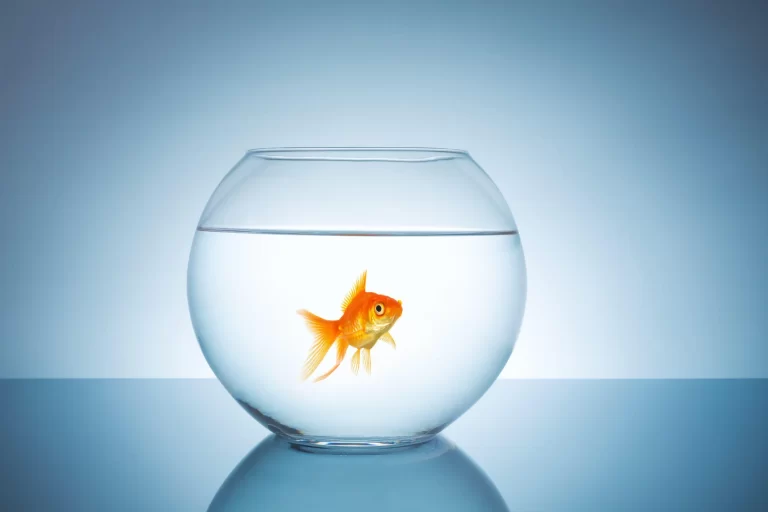Table of Contents
Leopard geckos have become increasingly popular as pet reptiles due to their docile nature, unique appearance, and relatively easy care requirements. However, as a responsible leopard gecko owner, it’s crucial to understand their dietary and hydration needs, especially when faced with situations where you might be unable to provide food and water for an extended period.
In this comprehensive guide, we’ll explore how long can leopard geckos go without food and water, the factors that influence their resilience, and the potential risks associated with prolonged fasting and dehydration.
Understanding a Leopard Gecko’s Metabolism
To better grasp a leopard gecko’s ability to go without food and water, it’s essential to understand their unique metabolism. As ectotherms or cold-blooded animals, leopard geckos’ metabolic rates are heavily influenced by environmental temperature. Unlike endotherms (warm-blooded animals), leopard geckos do not generate their body heat and rely on external sources, such as heat lamps or under-tank heaters, to regulate their body temperature.
When the environmental temperature is cooler, a leopard gecko’s metabolism slows down, allowing them to conserve energy and reduce their food and water intake requirements. This adaptation is particularly useful for leopard geckos in the wild, where food and water sources may be scarce during certain seasons or periods of drought.
Factors Affecting Their Survival Without Food

Several factors can impact how long a leopard gecko can survive without food. Understanding these variables is crucial in determining a safe timeframe for your pet and ensuring its well-being.
- Age: Younger leopard geckos, such as hatchlings and juveniles, have higher metabolic rates and generally require more frequent feedings than their adult counterparts. As they grow older, their ability to go without food for extended periods increases.
- Size/Weight: Larger and heavier leopard geckos typically have more energy reserves stored in their bodies, allowing them to go longer without food compared to smaller individuals of the same age.
- Temperature of Their Environment: As mentioned earlier, the temperature of a leopard gecko’s environment plays a significant role in regulating its metabolism. Cooler temperatures (around 70-75°F or 21-24°C) can slow down their metabolism, enabling them to survive longer without food.
- Overall Health Status: A leopard gecko’s overall health and body condition can influence its resilience during periods without food. Geckos that are well-nourished and in good health generally have better energy reserves and can withstand longer fasting periods compared to those that are already in a weakened state.
How Long Can Leopard Geckos Go Without Food?
While individual factors can affect a leopard gecko’s ability to go without food, here are some general timelines to consider:
| Age Group | Survival Time Without Food |
|---|---|
| Hatchlings (0-6 months) | 7-10 days |
| Juveniles (6-12 months) | 10-14 days |
| Adults (1 year and older) | 2-3 weeks |
It’s important to note that these timelines are rough estimates and should not be treated as definitive guidelines. Individual variations may exist, and it’s always best to consult with a reptile veterinarian or experienced keeper for specific advice tailored to your leopard gecko’s individual needs.
Factors Affecting Their Survival Without Water
Leopard geckos, like all living beings, require water for various bodily functions, including digestion, shedding, and overall hydration. The factors affecting their ability to survive without water are similar to those influencing their food requirements:
- Age and Size: Younger and smaller leopard geckos have higher surface area-to-volume ratios, which can lead to faster dehydration compared to larger, older individuals.
- Temperature: Higher temperatures increase a leopard gecko’s metabolic rate, which can result in faster water loss through respiration and shed skin.
- Overall Health Status: Leopard geckos in poor health or with underlying medical conditions may be more susceptible to dehydration and may not be able to withstand prolonged periods without water as well as healthy individuals.
While leopard geckos can obtain some water from their prey items, they still require access to a clean water source to maintain proper hydration levels.
How Long Can Leopard Geckos Go Without Water?

Leopard geckos, like all living creatures, require water for hydration to maintain their health and well-being. While they can survive for varying lengths of time without water depending on factors such as age, health, and environmental conditions, it’s crucial to ensure they have access to clean, fresh water at all times.
Here’s a breakdown of how long leopard geckos can typically go without water:
| Age Group | Survival Time Without Water |
|---|---|
| Hatchlings (0-6 months) | 1-2 days |
| Juveniles (6-12 months) | 2-3 days |
| Adults (1 year and older) | 3-4 days |
It’s important to note that these are approximate survival times and can vary based on individual factors. However, providing a shallow dish of clean, fresh water in their enclosure is essential for maintaining proper hydration levels and overall health. Additionally, monitoring your leopard gecko for signs of dehydration, such as sunken eyes or wrinkled skin, and offering water promptly if needed, can help prevent dehydration-related issues.
Signs of Dehydration and Starvation
As a responsible leopard gecko owner, it’s crucial to be aware of the signs that your pet may be dehydrated or starving. By recognizing these signs early, you can take appropriate action to address the issue and prevent further deterioration of your gecko’s health.
Signs of Dehydration:
- Sunken eyes or wrinkled skin
- Lethargy or lack of energy
- Decreased skin elasticity (skin tenting)
- Decreased shedding ability or retained shed
- Decreased appetite or refusal to eat
Signs of Starvation:
- Significant weight loss
- Sunken eyes and hollow-looking appearance
- Lethargy or lack of energy
- Decreased muscle mass
- Increased aggression or defensive behavior
If you notice any of these signs, it’s essential to provide your leopard gecko with access to fresh water and a suitable food source as soon as possible. Prolonged dehydration and starvation can have severe consequences and may require veterinary intervention.
Risks of Prolonged Fasting and Dehydration
While leopard geckos can survive for a limited time without food and water, prolonged fasting and dehydration can have severe and potentially life-threatening consequences. Here are some of the risks associated with extended periods without proper nourishment and hydration:
- Organ Damage: Prolonged starvation can lead to the breakdown of muscle tissue and organ damage, particularly in the liver and kidneys. This can have long-lasting effects on your leopard gecko’s overall health and well-being.
- Impaired Shedding: Dehydration can impair a leopard gecko’s ability to shed its skin properly, leading to retained shed and potential health issues, such as constriction or infection.
- Increased Susceptibility to Diseases: Both starvation and dehydration can weaken a leopard gecko’s immune system, making it more susceptible to various diseases and infections.
- Reproductive Issues: In breeding leopard geckos, prolonged periods without proper nutrition and hydration can negatively impact reproductive health, egg production, and overall fertility.
- Stunted Growth and Development: In younger leopard geckos, prolonged fasting and dehydration can lead to stunted growth and development, potentially resulting in permanent health issues.
To avoid these risks, it’s essential to resume a regular feeding and hydration schedule as soon as possible and monitor your leopard gecko’s health and behavior closely for any signs of distress or illness.
Tips for Proper Leopard Gecko Care
Providing proper care and meeting the dietary and hydration needs of your leopard gecko is essential for ensuring their overall well-being and longevity. Here are some tips to help you maintain a healthy and thriving leopard gecko:
Feeding Schedule and Diet:
- Feed juvenile and adult leopard geckos two to three times per week, offering an appropriate portion size based on their age and size.
- Provide a varied diet consisting of high-quality, gut-loaded feeder insects like crickets, mealworms, and dubia roaches.
- Supplement the feeder insects with calcium and vitamin D3 to ensure proper nutrient intake.
Hydration Practices:
- Provide a clean, shallow water dish and change the water regularly.
- Mist the enclosure with a spray bottle regularly to increase humidity levels, which can aid in shedding and hydration.
- Consider using a dripper system or humid hide to provide additional moisture sources.
Proper Enclosure Setup:
- Maintain appropriate temperature gradients within the enclosure, with a warm basking area around 90-95°F (32-35°C) and a cooler side around 70-75°F (21-24°C).
- Use a suitable substrate, such as a moisture-retentive mixture of coconut fiber and organic topsoil, to help maintain proper humidity levels.
- Provide hiding spots, climbing surfaces, and other enrichment items to promote natural behaviors and reduce stress.
Regular Monitoring and Veterinary Care:
- Observe your leopard gecko’s behavior, appetite, and overall appearance regularly to detect any potential health issues early.
- Schedule regular check-ups with a qualified reptile veterinarian for preventive care and to address any concerns promptly.
Prepare for Situations When You Can’t Feed Them:
- If you plan to be away for an extended period, consider hiring a pet sitter or arranging for someone to care for your leopard gecko and provide food and water.
- Invest in an automatic feeder or water dispenser system for added convenience and peace of mind.
Research and Continuing Education:
- Stay informed about the latest care practices, dietary requirements, and potential health issues by consulting reputable sources and experienced leopard gecko owners or breeders.
- Attend reptile expos or join online communities to connect with other enthusiasts and learn from their experiences.
By following these tips and staying vigilant about your leopard gecko’s care, you can help ensure that they thrive and minimize the need for them to go without food and water for extended periods.
Final Words
Leopard geckos are fascinating and rewarding reptile pets, but understanding their dietary and hydration needs is crucial for their well-being. While they can survive for a limited time without food and water, prolonged fasting and dehydration can have severe consequences, including organ damage, impaired shedding, and increased disease susceptibility.
By being aware of the factors that influence their survival times, recognizing the signs of dehydration and starvation, and following proper care practices, you can create a healthy and supportive environment for your leopard gecko.
Remember, every leopard gecko is an individual, and their ability to go without food and water may vary based on their age, size, overall health, and environmental conditions. It’s always best to consult with a qualified reptile veterinarian or experienced keeper for personalized advice and guidance.
Providing your leopard gecko with a balanced diet, clean water, and suitable habitat is not only your responsibility as a pet owner but also the key to ensuring their longevity and well-being. By prioritizing their needs and staying informed, you can enjoy the companionship of these incredible reptiles for years to come.












